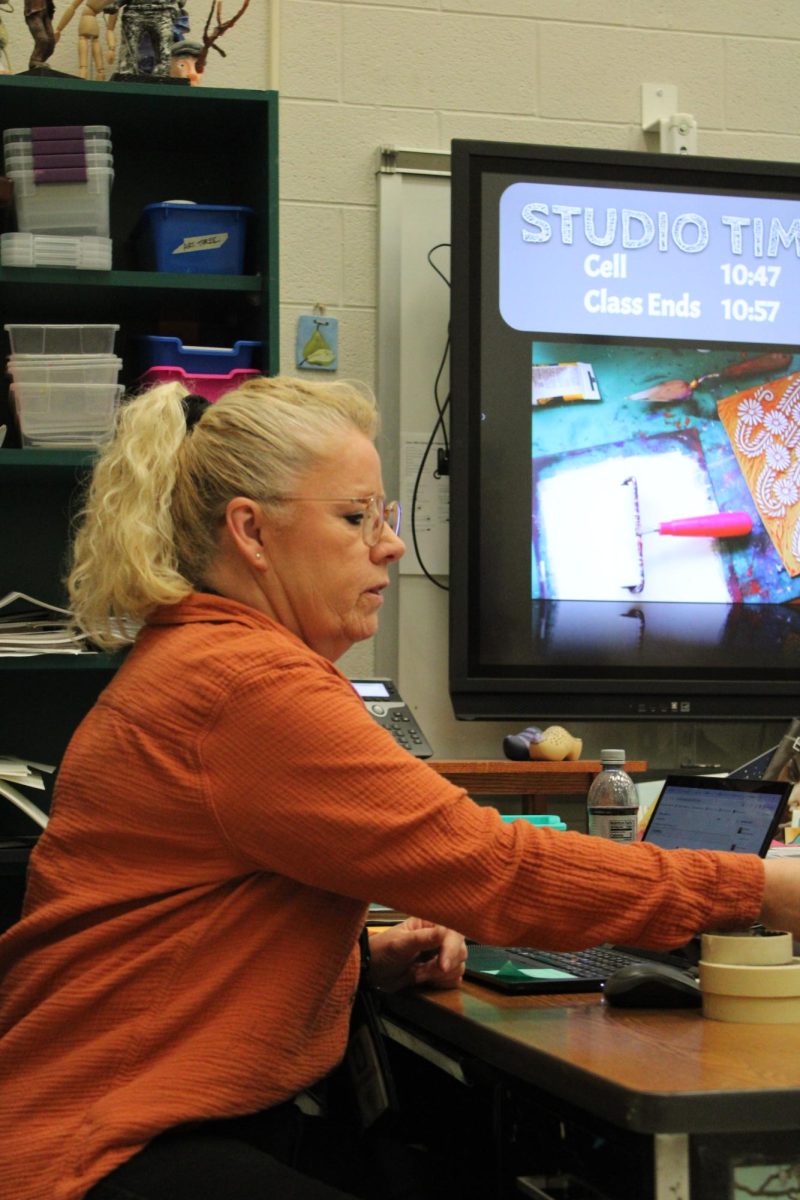Photography teacher Ms. Cooper reflects on changing photography trends and the impact she’s had on her students.
Ms. Cooper has been a huge part of the photography program at Potomac Falls for many years now; she’s helped tons of students discover their love for taking pictures and being creative. With advancements in technology and shifting trends, the way photographers work has evolved in many different ways. It’s interesting to see the many different types of photography people like throughout the times. Ms. Cooper has been teaching photography at PFHS since they were using film cameras; if anyone were to notice the changes in photo taking over the years, it would be her.
What inspired you to become a photography teacher?
“I was inspired to be an art educator because I enjoyed working with young people, and I enjoyed the creative arts. Teaching was a way to combine the two. As an art educator, you’re tasked with teaching a variety of mediums…including Photography.”
How has your approach to teaching photography changed over the years?
“We’ve been fortunate enough to have additional film cameras added to our inventory in recent years, as well as a number of DSLR cameras. For this reason, I can accommodate more students in the classroom and the new digital technology enables us to do more of a variety of photo challenges that most students enjoy.”
What photography trends have you noticed among students over the years?
“Cell phone camera technology has improved and students are quite adept at exploring filters and other ways to manipulate images using that technology. Taking a photography class can help them understand other options……other camera types and camera lens options that can achieve different effects, as well as related software for manipulating those images in various ways.”
Are there certain styles or themes that students gravitate toward more now than in the past?
“I think self portraits or portraits of friends is always a popular theme among students, but I typically assign specific topics when shooting film or doing digital photo challenges, with a few free choice options thrown in to provide a certain amount of personal voice and choice.”
Have social media platforms influenced the way students take and edit photos? If so, how?
“I don’t really focus on social media platforms in my photography classes. But most students do have access to a cell phone and snapping photos has become second nature to them. They typically have many images stored on their phones, and it’s easy to share online digitally. I focus more on photography as an art form, but also somewhat on how photographic images are used for commercial purposes, as well as discussing tips for protecting your photos when posting online.”
Do students still enjoy traditional photography methods, or is digital photography dominating?
“I think film photography will always seem a bit magical to people who have never done it before. It teaches patience because there’s no instant gratification, like there is with digital photography. You have to wait to see your images later on once you’ve developed them. As far as digital photography dominating film, digital is more convenient, but interest in film photography has grown in recent years. After years of decline in film due to the advent of digital technology, film has once again grown in popularity and Kodak has increased its production of film once again to meet demand.”
What do students tend to enjoy the most about photography class?
“I guess I would say it’s the photo challenges that we do. Whether it’s bokeh or food photography, or stop action; students have opportunities to work in groups (or individually) to try out new things in the classroom.”
Have you seen any particularly creative or unique photography projects that stood out?
“One year, I had a student who was eager to learn new things and think ‘outside the box’ and he learned about a way to manipulate a digital photograph through the use of sound data. I still really don’t know how it all works, but he started with a photo he had taken and was able to transform it into something less representational through sound data. Still a wonderful composition, but something new.”
What’s the most rewarding part of teaching photography?
“I think maybe the look on a student’s face when they’ve shot their film, developed it themselves, and then unrolled it to see the images they’ve captured. It’s a true sense of accomplishment.”


